

Following the use of GWAS, our understanding of genetic linkages to major inflammatory diseases including AS and IBD have significantly improved. This has also led to an explosion of functional genomics studies to help understand the pathological implications of these genetic associations. This study focuses on an intergenic region on chromosome 21q22, linked to several inflammatory conditions, and identifies the gene ETS2 as a key regulator of inflammatory macrophages. They then used the NIH LINCS database to identify drugs that might modulate ETS2 activity. There was a class effect of MEK inhibitors identified as strong modulators of ETS2 activity. Interestingly some benefit of using MEK inhibitors in pre-clinical colitis models has been previously shown. This work highlights the potential of functional genomics to elucidate disease mechanisms and uncover therapeutic avenues in immune-mediated disorders.
This landmark manuscript emphasizes the power of functional genomics to identify novel pathways mediating inflammation in axSpA and other immune-mediated disorders. An association of the intergenic region on chr21q22 with AS and IBD has been known for some time. This paper demonstrates that the region includes a polymorphism in an enhancer of the ETS2 gene that is present in most Europeans and Africans and has likely been conserved because of its essential role in activating macrophages in response to bacterial infection. Interestingly, blockade of ETS2 expression results in downregulation of proinflammatory genes also affected by JAK inhibitors though these agents do not directly affect expression of ETS2. A new target for therapeutic intervention in chronic inflammatory joint disease has been identified.